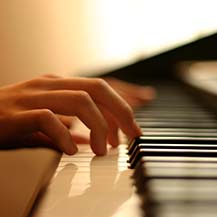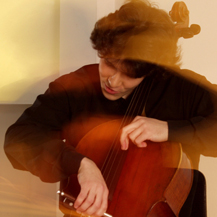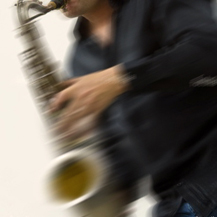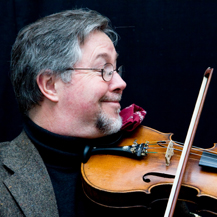- Flow
- For Musicians
- For Managers
- Neurobiology
- Synergetics
- Biography
- Contact
- Site Notice
- Privacy Policy
Method
The Four Principles of practising in flow
Flow-states are produced by focusing on the following aspects of instrumental practice:

1. Contact with the instrument
This addresses the tactile sense: Particularly important for contact with the instrument are those places where the instrument is actually touched, especially the points where the sound is generated (generally speaking: hands, fingertips; for winds: lips, embouchure; for strings: the connection between bow and string). Here we are looking for the most efficient transfer of power from the body to the instrument.
The optimal transfer conveys a rich, ‘thick’ sensation providing a close tactile connection with the instrument. This gives you maximum security and control while working on difficult passages. Therefore make sure to have a rich feeling of well-being at the contact points at all times!

2. Development of the sense of sound
This addresses listening: Developing a sense of sound involves a purposeful sensitization for the dimension of overtones. Experiment deliberately with the overtone spectrum by trying out different ways of playing your instrument and look for your very own preferred sound, the sound you really like.
Make sure to consistently produce a beautiful sound no matter what you are playing, even when you work on technique! This aesthetic, personal sound represents a kind of ‘home base’, a basic sound feeling from which all different expressions and colours in music can be explored in a playful way.
Concentration on producing optimal sound for every note furthers a highly pleasurable feeling of being lost in one’s own sound world. If consistently applied this particular kind of focus can make you feel really elated and has the capacity to carry you through the whole process of practising.

3. Effortlessness
This addresses the kinaesthetic sense: Any movement on the instrument should happen with a feeling of effortlessness. This does not mean complete relaxedness or slackness but a body feeling which is unstrained, easy and flowing. It’s a sensation of ‘not-doing’, of ‘not-working’, of swinging. Make sure that you keep this easy feeling all the time!
Watch your body! Your body signals stress through a subtle tightening which easily can be overlooked. Every single action has to be adjusted to this particular feeling, so if you work on a difficult passage, find first a simplification which enables you to play this passage without any tightening. This is the perfect basis on which to build your practice.
With growing security, there will gradually emerge the desire to approach the original version, i.e. to expand your ‘comfort zone’ until it encompasses the version you want to play on stage.

4. Playing around with the study material
It is recommended to begin each practice period by establishing the above described contact with the instrument, finding the sound and the feeling of effortlessness by playing a few notes or simple familiar melodies. Once you have found this feeling you can start working on the task at hand.
The first introduction to a piece should be done by playing around in an improvisatory way with the notes from that work. Lengths of notes, slurs or dynamic instructions can be ignored. They come later. The player’s first goal is to find optimal sound for all the given notes in the piece while carefully observing the previously discussed areas: the contact with the instrument and the effortlessness in the body. Correct immediately what you don’t like!
Make sure to look for optimal quality in contact, sound and body sensation in a consistently musical way! Without this musical approach there will be no flow, no creativity. You will get stuck in ‘practising’. It’s your musical playfulness which provides the fuel that drives you to the desired stage version of your piece in a self-organizing process solely guided by your senses.
practising in flow is therefore the art of not ‘doing’ what you are striving for but letting it evolve from a playful, improvisatory process.
more…
